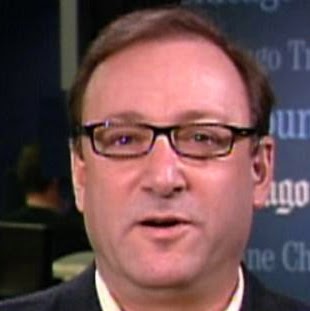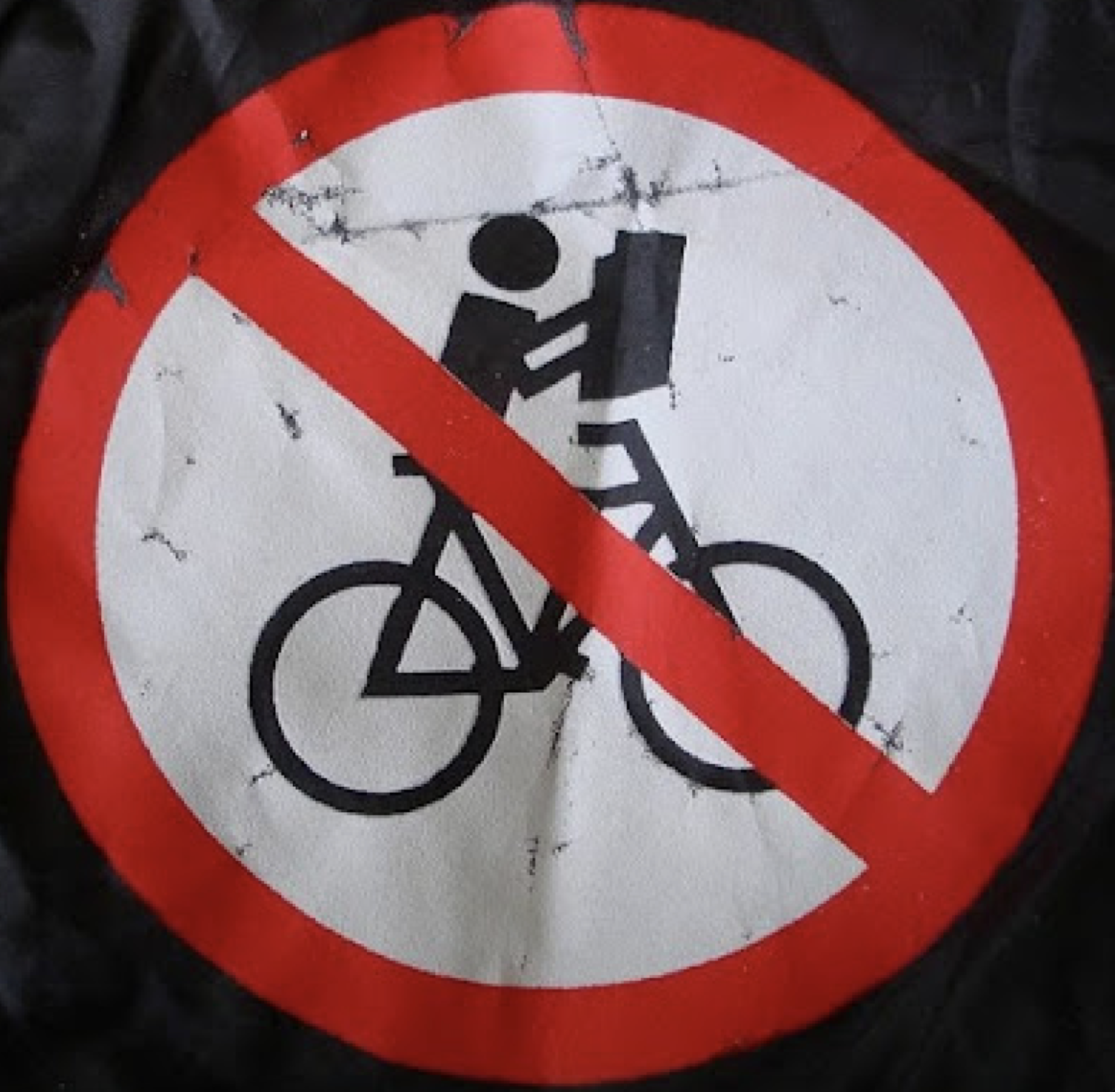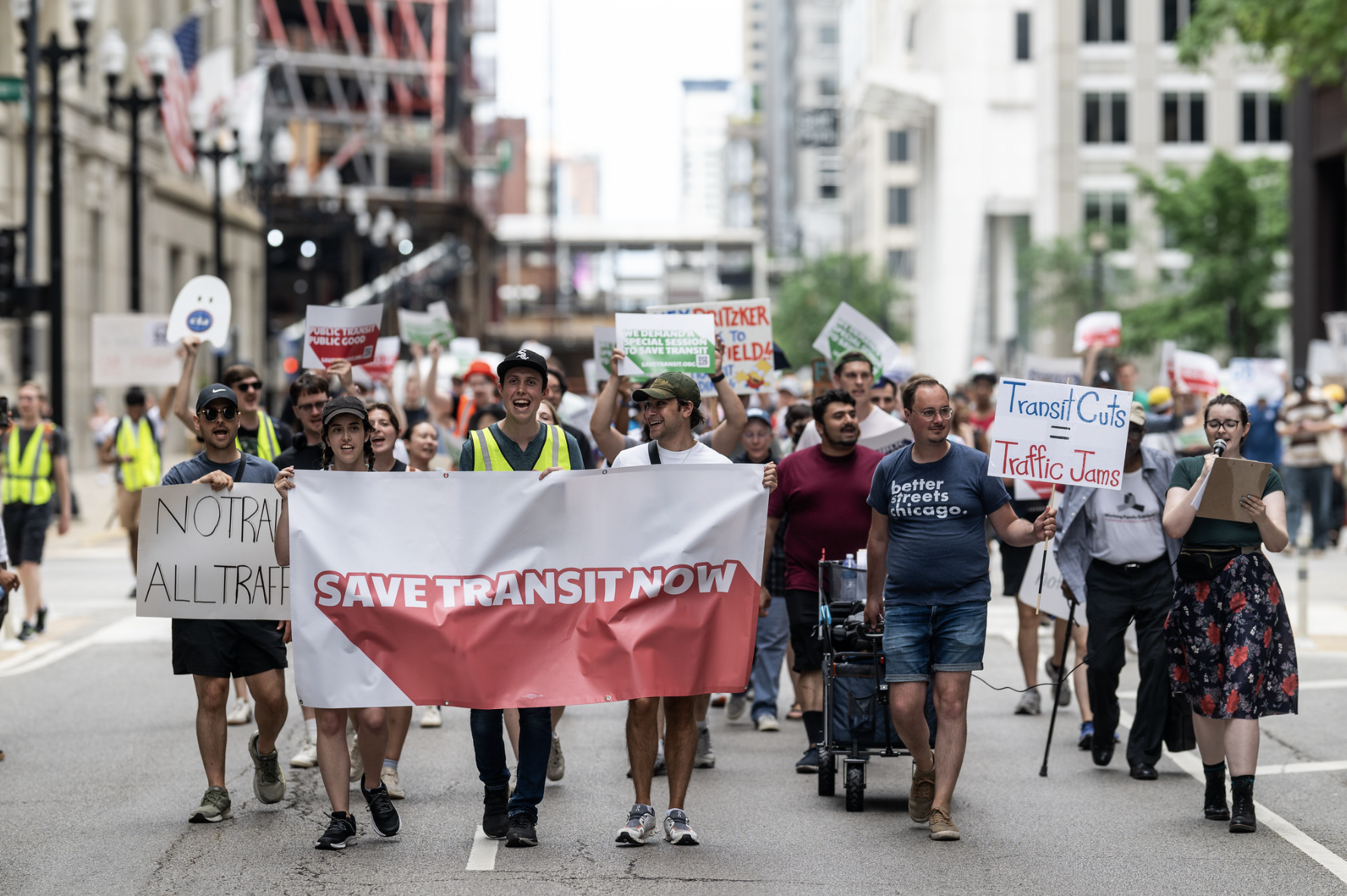Veteran Tribune transportation reporter Jon Hilkevitch is usually effective at covering highway and transit news but, when it comes to bicycle projects, he often misses the mark. For example, around the time of the Divvy launch, in spring of last year, he wrote a couple of articles painting the system as a dysfunctional ripoff. By August, he wrote another piece that all but admitted he was wrong.
Similarly, today’s Getting Around column is a clumsy overview of the Chicago Department of Transportation’s bikeways program, including some factual errors, which emphasizes the cars-versus-bikes angle. Granted, Hilkevitch does give airtime to some of the arguments for protected and buffered bike lanes, such as the fact that they encourage new ridership, and make streets safer for all users, not just bicyclists. But the impression he creates is that bikeways have dubious value, inconveniencing drivers while getting limited use from cyclists.
“Chicago is hustling to reach the finish line next spring on Mayor Rahm Emanuel's promise to complete 100 miles of bicycle lanes that are shielded from traffic,” Hilkevitch writes. “City officials hope the public doesn't judge the project strictly by the number of bike riders seen — very few in some locations — using the lanes.”
Nowhere in the piece does he mention that in many locations protected lanes have dramatically increased cycling. For example, the number of cyclists on Dearborn rose by 171 percent after the PBLs went in.
Hilkevitch does state the cost of designing and building bike lanes, about $2.7 million last year, at an average of $67,000 per mile. But he fails to mention that this is a drop in the bucket of the city's transportation budget, and $1.4 million of that money came from federal grants. One of the great things about bike infrastructure is that it's inexpensive, so there’s little financial risk involved in piloting new types of bikeways.
Hilkevitch spends much of the article discussing the poor state of the Lake Street protected lanes, and the debatable value of extending them three miles west this year, a topic we’ve previously covered on Streetsblog. It’s true that it may not make sense to install bike lanes under ‘L’ tracks, and maintenance of many of Chicago’s PBLs has been an issue, which CDOT says it is addressing with more frequent sweeping and plowing. However, Lake is far from a typical protected lane and more like a worst-case scenario.
Next, Hilkevitch sets his sights on road diets:
Yes, the lanes provide a designated and arguably safer place for cyclists to share the roadway with motor vehicles. But in many areas, including on Vincennes Avenue between 84th and 103rd streets, bike lanes were added to wide-open arterial streets mainly to slow down speeding vehicles by reducing the number of regular traffic lanes, transportation officials said.
Wrong. The number of mixed-traffic lanes stayed the same on Vincennes. It was previously a two-lane street, but with excessively wide lanes that encouraged speeding, resulting in 981 crashes, four of them fatal, in a five-year period. After the travel lanes were narrowed by the addition of bike lanes, the number of speeders observed during the a.m. rush was reduced from 624 to 390, and the number of vehicles going over 40 mph dropped from 192 to 54.
Hilkevitch also writes that road diets are “the reason why frustrated drivers often find themselves crawling in heavy traffic on 31st Street between the lakefront and just past the Dan Ryan Expressway, amid little-used bike lanes.” Again, for the most part travel lanes were not removed from 31st. Four-to-three conversions were done on two short blocks over bridges, but these kind of road diets tend to smooth out traffic by creating left-turn bays.
I haven’t seen stats on car speeds or bike ridership for this stretch of 31st, so I’m guessing Hilkevitch is basing this statement on a report from a disgruntled driver or two. However, after Kinzie Street received a similar PBL treatment in 2011, a CDOT study found little to no effect on motor vehicle speeds -- in most cases traffic moved slightly faster. Moreover, 49 percent of people surveyed said motorist behavior improved after the lanes were installed.
Hilkevitch may be fairly confused about bike issues, but one thing’s things for sure. Raising doubts about the entire bikeways program based on the Lake Street PBLs and anecdotes about the effects of road diets is pretty irresponsible, and certainly not worthy of a reporter of his caliber.






